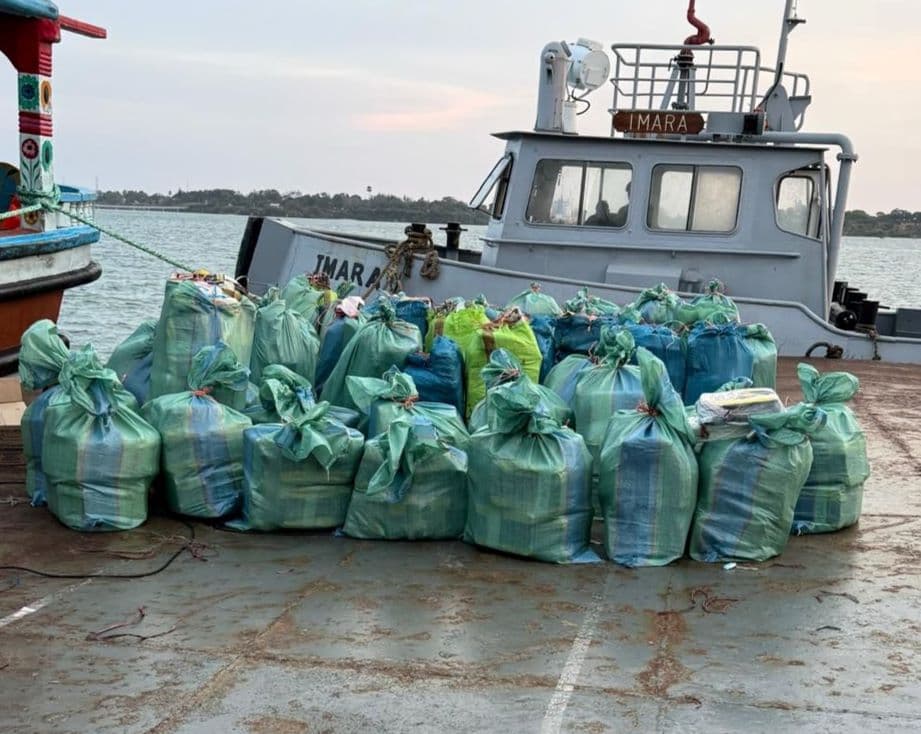We're loading the full news article for you. This includes the article content, images, author information, and related articles.
A record 1,024kg methamphetamine seizure off Kenya's coast triggers a complex transnational investigation, hinging on forensic analysis of recovered devices to dismantle a trafficking network threatening East Africa.

A multi-agency security team is intensifying its investigation into a record-breaking Sh8.2 billion (USD 63 million) methamphetamine haul seized in the Indian Ocean, with detectives now focusing on seven mobile phones recovered from six Iranian suspects. The forensic analysis of these devices, which include a crucial Thuraya satellite phone and a GPS unit, is considered paramount to unmasking the international syndicate behind the largest synthetic drug bust in Kenya's history.
The six suspects, identified as Jasem Darzaen Nia, Nadeem Jadgai, Imran Baloch, Hassan Baloch, Rahim Baksh, and Imtiyaz Daryayi, were arraigned at the Shanzu Law Courts in Mombasa on Monday, October 27, 2025. The prosecution successfully sought to have them detained for an extended period to allow for the completion of investigations, citing the complexity of the case and a significant language barrier, as the accused do not speak English or Kiswahili. The court ordered the suspects to be held at the Port Police Station pending a further hearing scheduled for Tuesday, October 28, 2025.
The historic seizure occurred on Thursday, October 23, 2025, approximately 630 kilometres east of Mombasa, following a meticulously coordinated intelligence-led mission codenamed 'Operation Bahari Safi'. The operation involved the Kenya Navy, Directorate of Criminal Investigations (DCI), Kenya Coast Guard Service, National Intelligence Service, and other partners. Acting on intelligence from regional and international partners, the Kenya Navy Ship (KNS) SHUPAVU intercepted a stateless dhow, identified as 'MV Igol', which had been under surveillance for its suspicious activities in the Western Indian Ocean.
Upon escorting the vessel to the Port of Mombasa, a search conducted on Saturday, October 25, uncovered 769 packages containing a crystalline substance. The total weight was confirmed to be 1,024 kilograms. DCI Director Mohamed Amin stated that preliminary analysis by the Government Chemist confirmed the substance was methamphetamine with a purity level of 98%. The estimated street value of the haul is Sh8.2 billion, making it the second-largest narcotics seizure in Kenyan history by weight, after a 1.1-tonne cocaine bust in 2004.
Investigators from the DCI's Anti-Narcotics Unit believe the key to dismantling the wider trafficking network lies within the recovered electronic devices: two Redmi phones, a Vocal Vo Core, a Poco, a Realme, a Thuraya satellite phone, and a GPS device. In an affidavit presented to the court, Inspector Shadrack Kemei requested authorisation to conduct a comprehensive forensic examination of the gadgets. The objective is to trace the consignment's owners, identify communication links with accomplices in other countries, and expose the financiers of the syndicate. The presence of a satellite phone is particularly significant, as it allows for communication far from terrestrial mobile networks, a common tool for illicit operations on the high seas.
This record meth seizure casts a harsh spotlight on Kenya's long-standing role as a critical transit point in the global narcotics trade. The United Nations Office on Drugs and Crime (UNODC) has repeatedly identified East Africa as a key gateway for illicit drugs, particularly heroin from Southwest Asia, destined for markets in Europe and North America. Traffickers exploit the region's extensive coastline and weaknesses in port security.
The 'MV Igol' incident is reminiscent of the July 2014 seizure of the 'MV Al Noor', which was carrying 370.8 kilograms of heroin worth Sh1.3 billion. That vessel was subsequently destroyed at sea on presidential orders as a deterrent. However, the acquittal of the crew on appeal due to procedural missteps, including failure to prove the vessel was in Kenyan waters, highlights the legal challenges in prosecuting such transnational crimes—a lesson the Office of the Director of Public Prosecutions (ODPP) will need to heed in the current case.
Interior Cabinet Secretary Kipchumba Murkomen announced on Sunday, October 26, that the government intends to publicly destroy the Sh8.2 billion meth consignment after the court case concludes, signaling a renewed and aggressive stance against drug trafficking. This operation, a result of robust multi-agency and international cooperation, underscores the scale of the challenge facing Kenya and the East Africa region as they combat sophisticated, well-financed international criminal organisations.
Keep the conversation in one place—threads here stay linked to the story and in the forums.
Other hot threads
E-sports and Gaming Community in Kenya
Active 6 months ago
Popular Recreational Activities Across Counties
Active 6 months ago
The Role of Technology in Modern Agriculture (AgriTech)
Active 6 months ago
Investing in Youth Sports Development Programs
Active 6 months ago